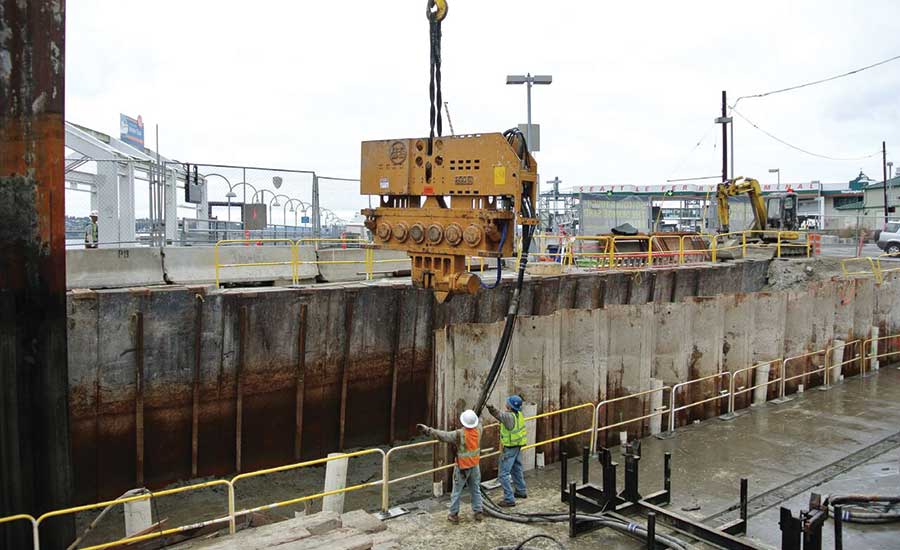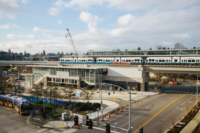 When Seattle looked to rebuild its 100-year-old Elliott Bay seawall in the downtown, planners knew it had to be stronger and better, but it didn’t necessarily have to be taller. Originally built between 1916 and 1934 with 20,000 old-growth timber piles, the aging 16.1-ft seawall has outlived its ability to protect Seattle from creeping seawater and seismic threats.
When Seattle looked to rebuild its 100-year-old Elliott Bay seawall in the downtown, planners knew it had to be stronger and better, but it didn’t necessarily have to be taller. Originally built between 1916 and 1934 with 20,000 old-growth timber piles, the aging 16.1-ft seawall has outlived its ability to protect Seattle from creeping seawater and seismic threats.
“The general condition of the seawall was not in great shape, and we knew we needed to do something,” says Lorelei Williams, capital projects and roadway structures manager for the Seattle Dept. of Transportation.
The current wall is 3 ft higher than the highest forecast for area sea-level rise by 2050. But the wall needed to be able to handle potential wave action, earthquakes and more height, if the sea level rises more than expected. The seawall is one of the first projects in the state to take sea-level rise into account during construction. The Puget Sound region is expected to see sea-level rise between 3 in. to 22 in.
The result is a 3,700-ft, $410-million wall that is designed to last more than 75 years. It will be as much as 15 ft west of the site of the current wall to accommodate construction design that protects against a 100-year wave event, tsunami waves and surges, while building additional space for habitat.
Designed by Parsons Transportation Group and built by Mortenson-Manson Joint Venture, the project, which started in 2013, will wrap up this summer.
“We took into account sea-level rise and built the seawall as much as we could to address future rise,” says Williams. By jet-grouting the soil to stabilize it, they engineered a means of adding height or supporting the wall. “There are possibilities of looking at the wall and modifying the design or structure to add height in the future,” Williams says.
The design also used a heavy-concrete gravity system supported by an engineered field of soil-cement columns, all protected by 15-in. precast-concrete panels.





Post a comment to this article
Report Abusive Comment